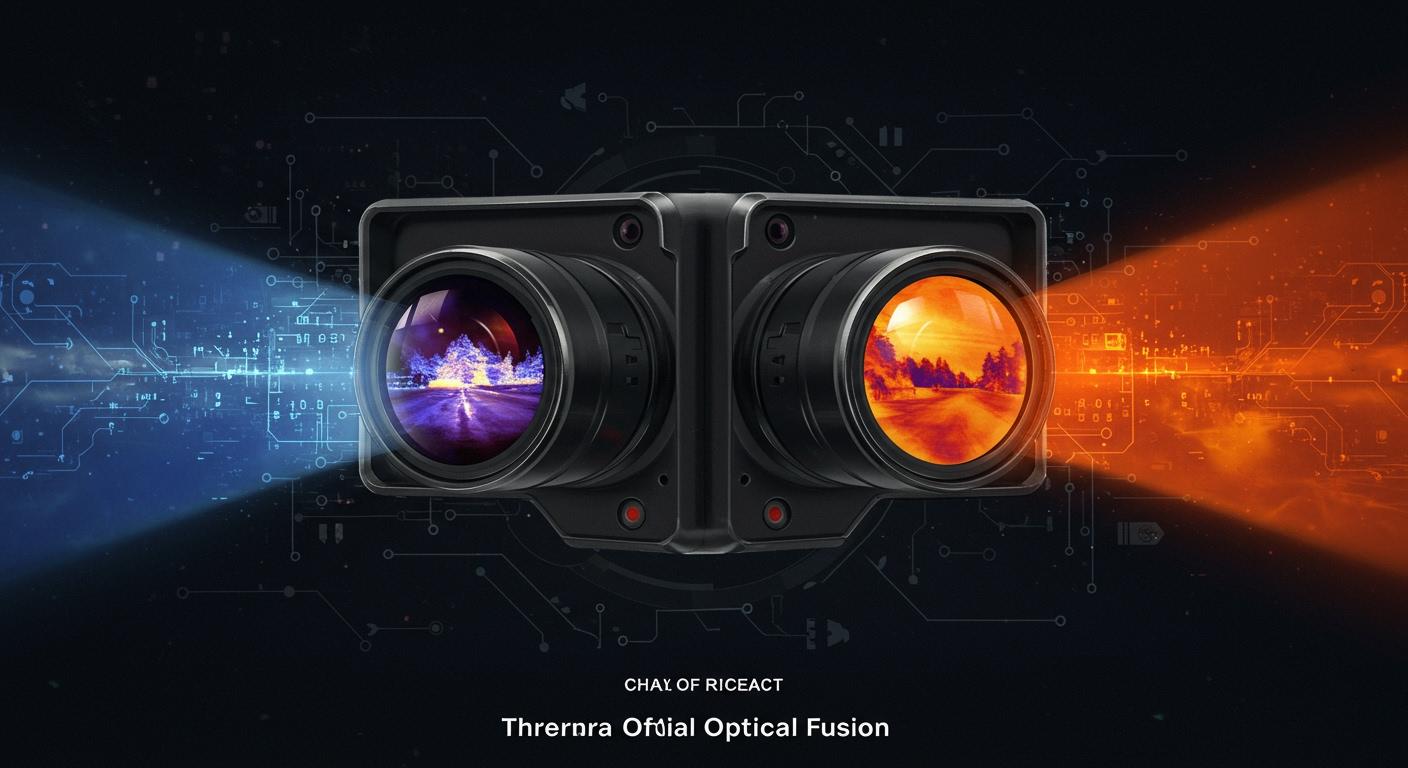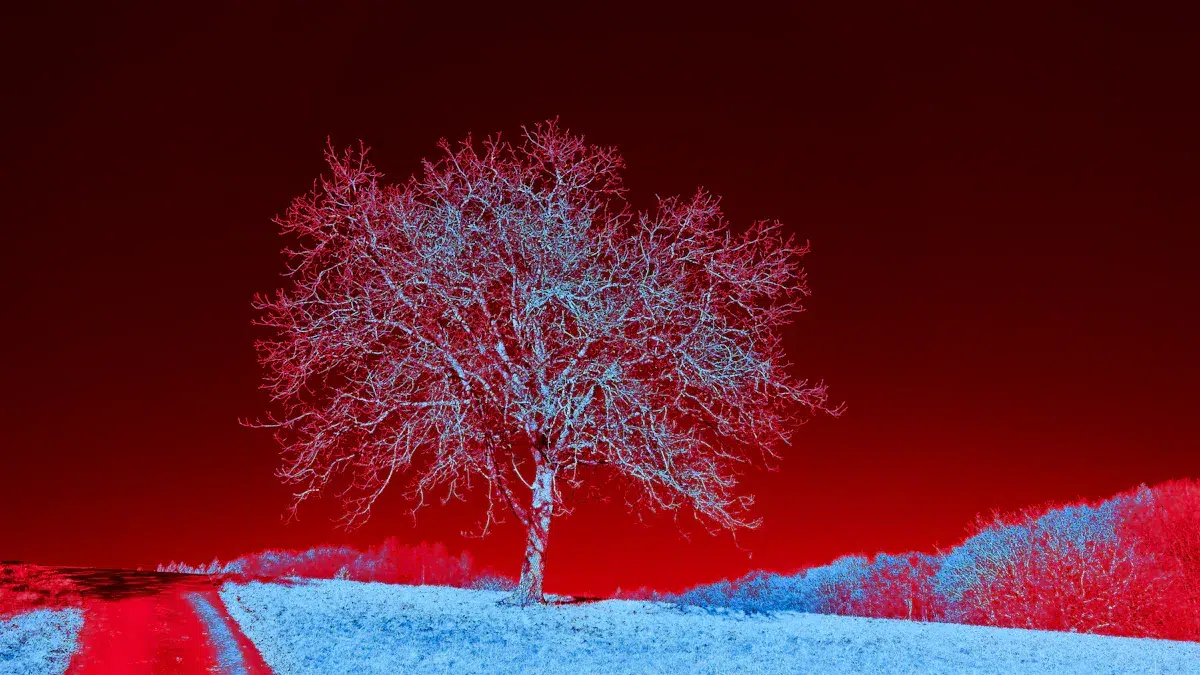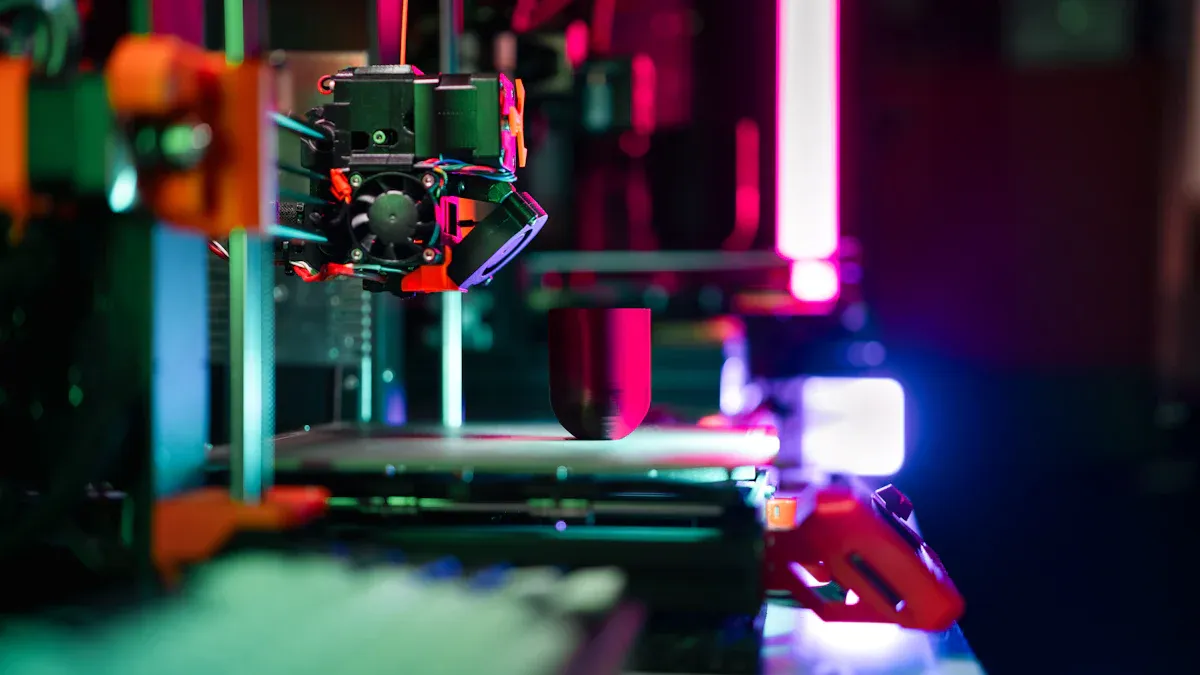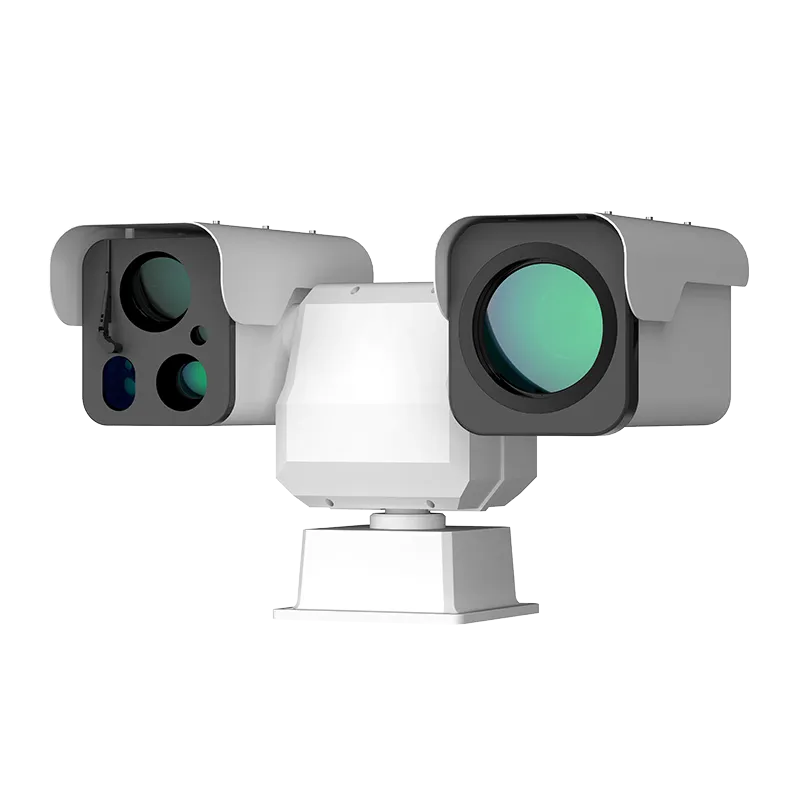
A dual spectrum thermal camera gives you two views by blending thermal images with visible light. This helps you see more details and spot problems faster than with a regular thermal camera. You get better context for every scene. The global market for these cameras is growing fast:
Valued at USD 1.25 Billion in 2024
Expected to reach USD 3.50 Billion by 2033
CAGR of 14.00% from 2026 to 2033
Key Takeaways
Dual spectrum thermal cameras mix thermal and visible light images. This gives clearer details and more context. It helps people make better choices.
These cameras are very important for many uses. They help with security, factory checks, and public health. Users can find heat leaks, fires, and people when it is hard to see.
When picking a dual spectrum thermal camera, look at things like resolution and thermal sensitivity. Also check if it can work with other systems. This makes sure the camera fits your needs.
Fusion technology makes it easier to understand what is happening. It mixes thermal and visible images. This helps users spot dangers fast and make smart decisions.
Buying advanced dual spectrum thermal cameras can make your work safer and faster. It helps you find problems and fix them quickly.
Dual spectrum thermal camera

Definition
A dual spectrum thermal camera lets you see two views at once. You get a thermal view and a normal light view together. The camera has two sensors inside. One sensor finds heat and makes a thermal image. The other sensor shows what you see with your eyes. When you use this camera, it mixes both images. You can see heat patterns and real details at the same time.
Here is a table that lists the main technical features you can find in a dual spectrum thermal camera:
Specification | Details |
|---|---|
Dual-Spectrum Imaging | 720p thermal lens and 4MP HD optical lens |
Enhanced Sensitivity | High-sensitivity sensor for starlight monitoring |
Fire Detection | Reliable fire and smoke detection features |
Temperature Monitoring | Identifies abnormal temperature variations |
Smart Intrusion Prevention | Virtual perimeters with real-time alerts |
Active Deterrence Features | Built-in warning lights and audible alerts |
Efficient Compression | Ultra 265, H.265, H.264, MJPEG support |
Flexible Connectivity | DC12V±25% or PoE power supply |
Versatile Storage | Micro SD cards up to 256 GB |
Resolution | 4MP @ 30 FPS or 720P @ 30 FPS |
Lens | 4mm Fixed Lens |
IP Rating | IP67 (dust and water resistant) |
Night Vision Range | Up to 165 ft in darkness |
Tip: You can use a dual spectrum thermal camera to find heat leaks, spot fires, and see people or cars even when it is very dark.
Core function
The main job of a dual spectrum thermal camera is to help you see things more clearly. It mixes a thermal image with a normal light image. You can see heat and real objects in one picture. This helps you know what is happening around you.
Let’s look at how a dual spectrum thermal camera is different from a regular thermal camera:
Feature | Standard Thermal Camera | Dual Spectrum Thermal Camera |
|---|---|---|
Image Type | Only thermal image | Thermal + visible light image |
Scene Details | Limited context | |
Object Recognition | Harder to identify objects | Easier to recognize people and vehicles |
Use in Darkness/Fog | Good | Excellent, with added visual information |
Temperature Accuracy | Good, but can miss details | Improved with cross-referenced data |
You get more details with a dual spectrum thermal camera. The thermal image shows heat differences. This helps you find problems like hot machines or hidden fires. The normal light image adds more details. You can tell what you are looking at. This mix helps you make fewer mistakes and better choices.
A dual spectrum thermal camera is useful in many ways:
You can find people in the dark.
You can watch for temperature changes in equipment.
You can see through smoke or fog in emergencies.
You can quickly spot people, cars, or things.
The camera blends two images so you always see the whole scene. You do not have to guess what a hot spot is. You see both the heat and the object. This makes your work safer and helps you be more accurate.
Thermal imaging basics
Principles
Thermal imaging helps you see heat from objects. Everything warmer than absolute zero gives off infrared light. This happens because molecules move inside things. A thermal camera finds this infrared light and makes a picture you can see. The camera lens is made from high purity germanium. This lens stops visible and ultraviolet light. Only infrared light gets to the detector. The detector can be cooled or uncooled. Cooled detectors notice small changes but cost more money. Uncooled detectors are cheaper and work well for most jobs.
Here is a table that explains the main ideas and parts of thermal imaging:
Component/Principle | Description |
|---|---|
All objects give off infrared light when they are warmer than absolute zero because their molecules move. | |
Thermal Imaging Lens | Made from high purity germanium, it blocks visible and UV light so only infrared light goes through. |
Infrared Detector | There are cooled and uncooled types; cooled ones are very sensitive but expensive, while uncooled ones are cheaper and good for most uses. |
A thermal image shows where things are hot or cold. This helps you find problems like machines getting too hot or fires you cannot see. The image lets you see temperature changes, even when it is totally dark.
Spectral bands
Spectral bands are groups of infrared wavelengths a thermal camera can see. The spectral range matters because it changes how well you spot heat in pictures. Different things give off infrared light at different wavelengths. You need a camera with the right spectral range to get good thermal images.
The spectral range tells you what infrared wavelengths the camera can find.
This range is important for seeing heat patterns clearly.
Different materials send out infrared light at different wavelengths, so you need the right range for good results.
New hardware has made thermal imaging much better. Metal matrix composites like copper-tungsten help control heat. Special camera housings spread heat and keep the camera steady. Some housings use liquid cooling to keep the camera cool when it works hard. Laser diode technology also needs good heat control. Micro TECs with more fill factor and thinner shapes help keep images sharp and steady.
These upgrades make your thermal images clearer and more trustworthy. You can count on your camera to give you good infrared pictures, even in tough places. These new features make thermal imaging useful for many kinds of work.
Fusion technology advantages
Enhanced interpretation
Fusion technology helps you see your surroundings better. It mixes thermal and visible images together. You can see heat and real details in one picture. This makes things less confusing. You understand what is happening more easily. You do not have to guess what a hot spot is. It could be a person or a machine. The mix of images gives you more context. You can make smarter choices.
Fusion technology helps emergency workers know what is going on. You can spot dangers and act fast. The table below shows how fusion keeps you ready and aware:
Evidence Description | Impact on Situational Awareness |
|---|---|
Shows threats as they happen | You can see risks and act before things get worse. |
Combines threat info with business plans | You make quick, smart choices and keep things running. |
Shares info with teams, vendors, and helpers | Everyone gets the right info at the right time, so teamwork is better. |
Fusion technology works in many places. In security, you see heat and the shape of people or things. In factories, you watch for hot spots and see machines clearly. In public health, you check crowd temperatures and find people who need help. Fusion gives you a full picture. You do not miss important things.
Note: Fusion technology helps you see through smoke, fog, or darkness. You get a clear image even when conditions are tough.
Improved detection
Fusion technology helps you find and follow things better. It mixes thermal and visible images for better detection. You can spot people, cars, or dangers even when it is dark or messy. The mix of infrared and visible data helps you catch things one sensor might miss.
Fusion technology is great for security and factory monitoring:
You get coverage all around with almost no blind spots.
The dual-spectrum PTZ camera uses a strong infrared module and a 4MP camera for clear pictures in any condition.
AI and smart analytics help you find and follow targets, making detection better.
The system cuts down on false alarms and helps you respond faster, turning watching into real-time action.
Fusion technology is also important in public health. Mixing data from different sensors helps health checks. For example, you can use ECG and motion sensors together to check heart health. Fusion makes health checks more exact and trustworthy.
If one sensor stops working, others help, so checks stay strong.
You see all parts of patient health, so you can make better choices.
Fusion technology uses thermal, infrared, and visible images together. This makes detection better, lowers mistakes, and works for many jobs. You can trust what you see, whether you work in security, factories, or health care.
How dual spectrum cameras work

Sensor setup
A dual-mode optical imaging system lets you see heat and normal images. The camera has two sensors inside. One sensor finds infrared thermal radiation and makes a thermal image. The other sensor takes a picture you can see with your eyes. This setup helps you see heat and real details at once. The table below lists features you often find in thermographic cameras:
Feature | Description |
|---|---|
Dual-Spectrum Imaging | Uses a 720p thermal lens and a 4MP HD optical lens for clear video. |
Enhanced Sensitivity | Has a sensitive sensor for watching in low light. |
Fire Detection | Can spot fire dangers and smoke well. |
Temperature Monitoring | Finds strange temperature changes fast. |
Smart Intrusion Prevention | Makes virtual borders and gives alerts if someone enters. |
Active Deterrence Features | Has warning lights and sounds to scare off threats. |
Flexible Connectivity | Can use DC12V±25% or PoE power for easy setup. |
Versatile Storage | Lets you use Micro SD cards up to 256 GB to save videos. |
Some thermographic cameras have up to 640 × 480 thermal pixel resolution. They also measure temperature very accurately. These features help you get exact temperature readings and better camera communication.
Data capture
Both sensors work together in a dual-mode optical imaging system. The camera takes visible and infrared thermal radiation data at the same time. This makes the image clearer and gives you more detail, even when it is dark. The system matches up RGB and infrared and visible images. This helps cut down on noise and makes the picture sharper. You do not get parallax errors because the camera lines up both images just right. Thermographic cameras use this way to make sure fusion works well.
Image fusion
Fusion mixes the thermal and visible images into one clear picture. You use special image fusion methods to get the most from both images. The table below shows some common image fusion algorithms in thermographic cameras:
Algorithm Type | Description |
|---|---|
Spatial-domain algorithms | Use weighted average, contrast change, and logical filters for fast results. |
Transform-domain algorithms | Change images to the frequency domain to pull out more features. |
Multiscale transform methods | Use pyramid and wavelet transforms to break down and mix images at different scales. |
You can also use a dual-mode optical imaging system with Convolution-Swin-Transformer Blocks. This method helps local and global information work together better. A multi-component loss function keeps edge texture, structure, and brightness balanced. The fusion process in thermographic cameras gives you one image that shows heat and real details. This makes camera communication stronger and helps you make smarter choices.
Tip: Using a dual-mode optical imaging system lets you see both infrared thermal radiation and visible light. This makes your fusion results more trustworthy in any place.
Choosing the right camera
Performance features
When picking a dual spectrum thermal camera, you should look for features that help you do your job well. You want a camera that gives clear pictures and mixes images together well. The camera should also be reliable and help you at work. Here are some key things to check:
Infrared resolution helps you see small things in each picture.
Thermal sensitivity lets you notice tiny changes in temperature.
Frame rate tells you how smooth moving pictures will look.
Temperature range coverage means your camera works in many places.
Spatial resolution gives you sharp pictures for better study.
Battery life lets your camera last longer when you are outside.
Integration capabilities help your camera work with other tools.
Compliance with industry standards means your camera is safe and high quality.
You can look at how good the pictures are and how well the camera mixes images by checking the table below:
Brand | Model | Image Quality Features | Fusion Capability Features |
|---|---|---|---|
HIKMICRO | B Series | SuperIR technology, multiple image modes (Thermal, Fusion, PIP, Optical) | Quick temperature measurement, WiFi connectivity |
FLIR | E4 | Resolution of 80 x 60, MSX Image Enhancement for better clarity | WiFi connectivity for image sharing |
It is important that your camera works well in hard places. You want it to keep the right temperature, measure surface heat correctly, and give even pictures. These things help your camera give you good results every time.
Tip: New ideas in dual spectrum thermal cameras help you do better work. You can find leaks faster, check things more easily, and use smart tools like AI. These new features help you work better in real life.
Application needs
You need to pick a camera that fits your job. Security and factory work need different things. The table below shows what to think about:
Requirement | Description |
|---|---|
Resolution | Higher sensor resolution allows for sharper images and more precise measurements, crucial for both security and industrial applications. |
Temperature Range | Different applications may require varying temperature ranges; understanding this helps in selecting the right camera. |
Sensitivity | High thermal sensitivity is important for detecting small temperature differences, which can be critical in both security monitoring and industrial diagnostics. |
Accuracy | Thermal radiometric accuracy of ±2°C (3.6°F) or better is essential for reliable data in both contexts. |
Emissivity | Adjusting emissivity values is necessary depending on the material being monitored, impacting the effectiveness of thermal analysis in both fields. |
You should also look for new ideas, good quality, and helpful service when picking a camera. Verytek is a good choice because they make new technology, sell great products, and help you quickly when you need it. These things help you do your job better.
Dual spectrum thermal cameras let you see heat and normal details together. They help keep people safe and find problems fast. You can see clearly even when it is dark or foggy. These cameras are good for security, factories, and hospitals.
Benefit | Description |
|---|---|
Enhanced Monitoring | Sends alerts right away and finds threats fast |
Cost Efficiency | Uses two types of tech in just one camera |
AI Integration | Tracks things better, even in hard places |
When picking a camera, look for new ideas and good help. The newest cameras have sharp pictures and smart AI tools. This makes your job safer and easier.
FAQ
What is dual-mode image fusion in a dual spectrum thermal camera?
Dual-mode image fusion lets you see two kinds of images. You get both visible and thermal images at the same time. This gives you more details about each thing you look at. It helps you understand what is happening and makes it easier to spot targets in many jobs.
How does fusion improve target detection in low-light conditions?
Fusion mixes visible and thermal images together. You can see things even when it is dark. The camera uses special fusion methods to show heat and shapes. You find targets fast and do not miss important things.
Can you use dual spectrum thermal cameras for biomedical applications of thermal imaging?
Yes, these cameras work for biomedical uses. Fusion of visible and thermal images helps you check body temperature and find health problems. You get clear pictures of each person in medical places.
Why is visible image quality important for target recognition?
Good visible image quality helps you see things clearly. Fusion mixes visible and thermal images. You spot targets faster and make smart choices. Clear visible images help you find targets in security and factory jobs.
How do dual spectrum cameras help with image fusion in outdoor applications?
Dual spectrum cameras use fusion to mix visible and thermal images. You can see things in any kind of weather. Fusion gives you sharp pictures and helps you follow every target. Outdoor jobs get better results with clear fused images.
See Also
Vanadium Oxide Thermal Imaging Cameras Enhance Rescue Operations
The Importance of Thermal Imaging Cameras in 2025
Utilizing Thermal Imaging Cameras for Effective Rescue Missions
Best Reviewed AI Video Boxes for Vehicles in 2025
Key Trends Influencing Android Auto Wireless Adapter Development

